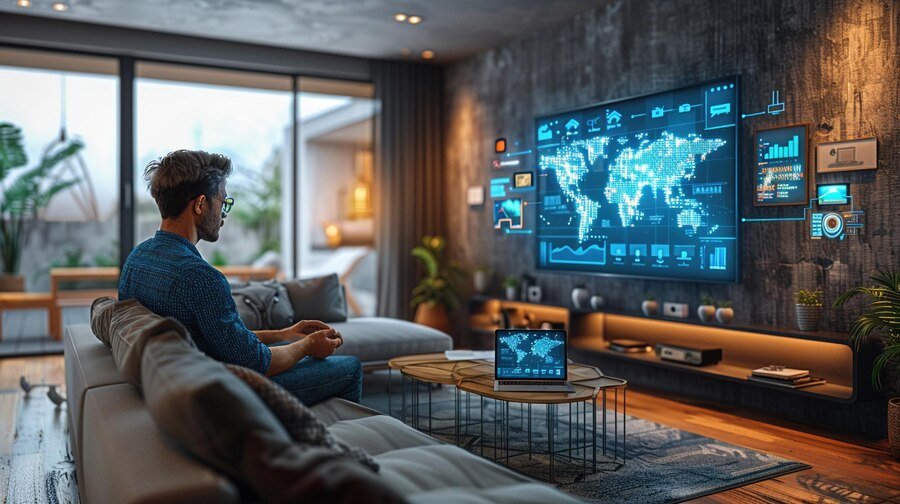
Introduction to IPTV and its Benefits
IPTV, or Internet Protocol Television, has transformed the way we consume media. Gone are the days of relying solely on traditional cable services. With IPTV What, you can stream your favorite shows and movies directly over the internet. The convenience is undeniable; you gain access to a vast library of channels and content right at your fingertips.
But like any technology, IPTV isn’t without its hiccups. Users often encounter various issues that can disrupt their viewing experience. Understanding these common challenges is essential for enjoying seamless entertainment at home. Whether it’s pixelated images or frustrating buffering delays, knowing how to tackle these problems will help you maximize your IPTV experience.
Let’s dive into some typical obstacles faced by IPTV users and explore effective solutions to keep your streaming smooth and enjoyable!
Common Issues Faced by IPTV Users
IPTV has transformed how we consume content, but it’s not without its hiccups. Many users report experiencing poor video quality. This can manifest as pixelation or unclear images, disrupting the viewing experience.
Buffering and lagging are also prevalent issues. These interruptions often stem from slow internet connections or network congestion during peak usage times.
Audio problems can be frustrating too. Users may face desynchronization where the sound doesn’t match the visuals, leading to an awkward viewing experience.
Additionally, channel loading issues crop up frequently. Some channels might not load at all or take ages to respond when selected.
These common challenges highlight that while IPTV offers numerous benefits, users must navigate a few bumps along the way in their quest for seamless streaming entertainment.
Poor Video Quality
Poor video quality can be a frustrating experience for any IPTV user. You expect crisp, clear images but instead find pixelation or blurriness. This issue often stems from low bandwidth or an unstable internet connection.
When the network speed dips below what’s required for streaming, the video suffers. It may also happen if too many devices are connected to the same network, hogging valuable bandwidth.
Another factor could be your IPTV provider’s server load. If too many users access the service simultaneously, it can affect stream quality drastically.
To improve this situation, check your internet speed regularly and ensure you’re using a wired connection whenever possible. Restarting your router might just give you that needed boost in performance as well. A little fine-tuning can restore that high-definition viewing experience you crave!
Buffering and Lagging
Buffering and lagging can quickly ruin your IPTV experience. These issues usually stem from slow internet connections or network congestion. When the data can’t flow smoothly, you’re left staring at those frustrating loading icons.
A poor Wi-Fi signal often exacerbates this problem. If you’re too far from your router, interference may disrupt the connection. Consider moving closer to improve speed.
Another culprit could be bandwidth hogs in your household. Streaming on multiple devices simultaneously can strain your network. Try disconnecting unused devices to free up some capacity.
Sometimes, using outdated hardware can also lead to buffering problems. Ensure that routers and set-top boxes are up-to-date for optimal performance.
If these tactics don’t work, it might be time for a speed test or even contacting your Internet Service Provider for assistance with potential outages or throttling issues.
Audio Problems
Audio problems can significantly impact your IPTV experience. Imagine watching a thrilling movie, only to find that the dialogue is muffled or completely absent. This can be frustrating.
Several factors contribute to audio issues. Sometimes, it’s a simple problem with the settings on your device or app. Check if the sound is muted or turned down too low.
Other times, outdated software may cause compatibility issues between your IPTV What provider and playback device. Regular updates are essential for smooth operation.
Network instability can also lead to audio glitches. If you’re experiencing frequent dropouts, consider testing your internet speed and stability.
External factors like faulty cables or speakers could be at play as well. Inspect connections and equipment before diving deeper into troubleshooting methods.
Channel Not Available or Loading Issues
Experiencing channel not available or loading issues can be frustrating for any IPTV user. You settle in to watch your favorite show, only to find that the channel won’t load at all.
This problem often stems from network connectivity. A weak internet connection may cause channels to fail during loading. Check your Wi-Fi signal strength and consider switching to a wired connection for more stability.
Sometimes, the issue lies with the IPTV provider itself. They might be facing temporary outages or maintenance on specific channels. Refreshing your app or device can help resolve these glitches.
Another possibility is outdated software. Ensure that both your streaming device and IPTV application are updated regularly. Outdated versions could hinder performance and accessibility of channels.
If problems persist, reaching out to customer support can provide clarity and assistance tailored to your situation.
How to Troubleshoot These Issues
When facing IPTV issues, the first step is to check your internet connection. A stable and fast connection is crucial for streaming. Use a speed test tool to verify that you’re getting enough bandwidth.
Next, restart your device. Unplug it for about 30 seconds before plugging it back in. This can clear temporary glitches that often cause problems.
If video quality remains poor, adjust the streaming resolution settings within the app or device menu. Sometimes lowering the resolution helps if your connection struggles with high definitions.
For audio concerns, ensure that all cables are securely connected and select the correct audio output on your device settings.
Try switching channels or restarting the IPTV app itself; sometimes it’s simply a channel-specific issue requiring a quick refresh.
Tips for Preventing Future Problems
To prevent future issues with your IPTV service, start by ensuring a stable internet connection. Use an Ethernet cable instead of relying solely on Wi-Fi. This simple change can drastically reduce disruptions.
Regularly update your streaming device and the IPTV software. Developers often release updates that fix bugs and enhance performance, so staying up-to-date is crucial.
Consider optimizing your network settings. Adjusting Quality of Service (QoS) settings can prioritize streaming traffic, giving it the speed it needs to run smoothly.
Monitor bandwidth usage in your home as well. Multiple devices using significant bandwidth simultaneously can cause slowdowns for everyone.
Engage with community forums or support groups related to your IPTV provider. Sharing experiences with other users may offer insights into resolving emerging issues before they escalate.
Importance of Regular Maintenance
Regular maintenance is essential for a seamless IPTV experience. Just like any technology, your IPTV system requires attention to function optimally.
Updating software and firmware can significantly enhance performance. These updates often include fixes for bugs that might affect streaming quality or functionality.
Checking internet connections regularly cannot be overlooked either. A stable connection ensures uninterrupted access to channels and content.
Cleaning up your device by removing unnecessary applications frees up memory and boosts speed. This simple step can make all the difference in how smoothly you enjoy your favorite shows.
Monitoring subscription status is also crucial. Ensure you’re aware of renewal dates to avoid unexpected interruptions in service.
By committing to regular maintenance practices, you secure a reliable viewing experience while enjoying all the benefits that IPTV has to offer.
Conclusion
IPTV, or Internet Protocol Television, has transformed how we consume media. It provides access to a vast array of channels and on-demand content over the internet. However, like any technology, it can come with its share of hiccups.
Many users face common issues that can disrupt their viewing experience. Poor video quality is often at the forefront; this might manifest as pixelation or blurriness during playback. Buffering and lagging are also frequent complaints, leading to interruptions while watching your favorite shows.
Audio problems can be frustrating too—whether it’s out-of-sync sound or complete audio loss. Additionally, viewers may encounter channel unavailability or loading errors that prevent them from accessing desired content.
Troubleshooting these common IPTV issues usually begins with checking your internet connection and device settings. Restarting both your router and streaming device often resolves many problems quickly.
There are several tips for preventing future issues as well: ensure you have a stable high-speed internet connection, keep your software updated, and regularly clear cache files on your devices.
Regular maintenance of your IPTV service is crucial in maintaining optimal performance. Consistently monitoring connections helps catch potential disruptions before they affect your viewing experience.
Understanding these aspects will help enhance user satisfaction when navigating through the world of IPTV services.
RELATED POSTS
View all


